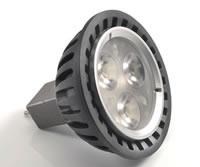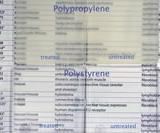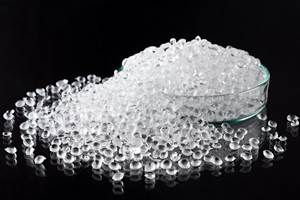Additives: Three Trends to Track
Additives that render plastic compounds antistatic or electrically and/or thermally conductive are in hot demand.
Additives that render plastic compounds antistatic or electrically and/or thermally conductive are in hot demand. The wider acceptance of such compounds in replacing metal (particularly aluminum) and non-conductive plastics is evident in their double-digit annual growth rates over the last decade. One reason is that their prices have dropped with increasing use in electronics, computers, medical devices, automotive, aerospace, and appliances.
Antimicrobial additives or biocides are a third group of additives enjoying significant growth. They have been long used in flexible PVC and urethane foams to protect them from attack by microorganisms in applications ranging from medical tubing to outdoor furniture, shower curtains, and liners for pools, ditches, and roofs. Today, they are being incorporated into more plastics than ever, from polyolefins and TPEs to nylons, acrylics, ABS, acetal, and LSR in consumer, industrial, and healthcare applications.
As shown from the examples below, these trends offer many new opportunities for custom and specialty compounders, injection and blow molders, thermoformers, and extruders of sheet, film, tubing, and profiles.
CONDUCTIVE ADDITIVES FOR ESD
Electrically conductive plastics have made significant inroads in ESD (electrostatic dissipation) for electronic packaging and automotive fuel systems and are growing in both metal replacement and safety applications such as ATEX (explosive atmosphere) environments. The range of application has broadened to include silicon-wafer storage boxes, thermoformed trays for electronic components, storage and transport containers, air-cleaner parts, conveyors, and protective films, foils, and bags.
As opposed to traditional migrating antistats used in packaging, ESD applications require longer-term protection and/or lower resistivity. They are better served by “permanent” antistats such as carbon black, carbon and metal fibers, and nanomaterials. These additives must show rapid charge dissipation and cleanroom compatibility—no sloughing—and low outgassing.
Carbon black compounds and concentrates offer a very good price-performance ratio and continue to account for a major portion of conductive plastics, according to leading specialty compounders. Some critics maintain that while carbon blacks are quite effective at adding electrical conductivity, their adverse effects on mechanical properties are a drawback. But suppliers such as Cabot Corp. in Boston (cabot-corp.com) and Akzo Nobel Polymer Chemicals in Chicago (akzonobel.com) now offer specialty “superconductive” blacks that are said to overcome such problems and to be efficient at addition levels of 5% to 15%. Such products reportedly can compete with new and more expensive multi-wall carbon nanotubes.
One of the fastest growing areas for conductive plastics is metal replacement for lighter weight. One such new application is UN-approved ATEX containers for storing inks and hazardous liquids. Working with specialty compounder Premix Oy (premix.fi) in Finland, Dutch-based Shoeller Arca Systems reportedly was the first to introduce a conductive plastic container for this market in 2009. Premix provided two new Pre-Elec HDPE compounds based on carbon black and carbon and stainless-steel fibers.
Meanwhile, Premix’s former U.S. compounding operation, now called Themix Plastics, Inc., Lake Mills, Wis. (themixplastics.com), recently came up with the Con-Elx family of compounds designed for injection molding electrodes used in heating water. The electrodes do not get hot, but only transfer electrical power to the water, which then heats up. According to Themix president Steven Kidd, these highly conductive compounds are made with a proprietary blend of conductive carbon additives and are processable with standard equipment. Says Kidd, “We can make these compounds with a variety of crystalline polymers. Recently, we have made PPS compounds for electrodes with volume resistivity as low as 0.1 ohm-cm, which is very close to what is needed to make a bipolar plate for a fuel cell. The fuel cell is the ultimate destination for these products, and we plan to sample these later this year.” Most fuel-cell plates have been made of thermosets and require special molding equipment.
Medical devices are a promising market for antistatic compounds, says Tom O’Brien, the new global healthcare industry manager at SABIC Innovative Plastics, Pittsfield, Mass. (sabic-ip.com). He notes that static charge can be a problem for pill dispensers and aerosol devices. For the latter, SABIC recently came out with new LNP Stat-Loy compounds that are permanently antistatic, clear, and pre-assessed for biocompatibility according to ISO 10993. These compounds ensure that aerosol devices dispense a full dose of a powder or liquid droplets to the patient, rather than having them adhere to the device itself. The new compounds are available in clear ABS, PMMA, and Xylex PC/polyester alloy.
EXPLORING NANOMATERIALS
The newest class of conductive additives is nanoscale products—carbon nanotubes (CNTs), as well as carbon nanofibers (CNFs), and graphene nanofillers. The last three years have seen significant improvements in CNT-based plastic compounds, which have gained market acceptance in electronics packaging, automotive fuel systems, antistatic transport drums, aerospace, and sporting goods.
CNTs’ unique structure along with their huge aspect ratio (L/D), which ranges from 1000 to 1,000,000, differentiate them from other conductive materials. They have been shown to possess such extraordinary properties as 16 times the strength/weight of stainless steel and five times higher thermal conductivity than copper. CNTs are divided into single-wall (SWCNTs), double-wall (DWCNTs) and the more widely used multiwall (MWCNTs). Major capacity expansions are underway, particularly in MWCNTs:
- C-Nano Technology, Santa Clara, Calif., (cnanotechnology.com) last year completed the largest MWCNT manufacturing facility yet (1.1 million lb/yr).
- Bayer MaterialScience, Pittsburgh (bayermaterialsciencenafta.com) started up a pilot plant for MWCNT with capacity of 440,000 lb/yr earlier this year. Bayer plans a 6.6-million-lb plant within the next two years.
- Nanocyl, Atlanta (nanocyl.com), will bring on 880,000 lb/yr capacity by year’s end.
- Arkema, Philadelphia (arkema-inc.com), is constructing an 880,000-lb MWCNT plant for startup early next year. This reportedly will be the first to use entirely bio-sourced raw material.
- Hyperion Catalysis, Cambridge, Mass. (hyperioncatalysis.com), the U.S. pioneer in CNTs, has focused on making its Fibril MWCNTs easier to use. The company now supplies them premixed in a wide spectrum of plastics from HDPE, EVA, PS, and PET to PC, PEI, PBT, nylons, PEEK, and PES.
Expanding usage and all this new capacity have resulted in significantly lower prices for carbon nanotubes, particularly MWCNTs, a trend that’s expected to continue. Prices of MWCNTs dropped from $25 to $50/g in under three years to $5 to $10/g. Costlier SWCNTs are used for high-end niche applications like satellite components. Their prices also dropped in the last few years from $100-200/g down to $50-100/g.
According to Lance Criscuolo, president of Zyvex Performance Materials, Columbus, Ohio (zyvexpro.com), “Expect to finally start seeing multifunctional composites made with carbon nanotubes and nanographenes that offer both superior properties and EMI or ESD conductivity enhancements. Part of this advance has been suppliers’ use of clever ways to get enough CNTs into the polymer without adversely affecting mechanical properties. This has included processing enhancements as well as tailored compatibilization of nanotubes with the polymer.”
THERMAL CONDUCTIVITY ON A ROLL
Computer, automotive, appliance, and aerospace markets are extending a warm welcome to thermally conductive plastics compounds for transferring heat away from sensitive electronic components. They are increasingly specified for heat exchangers, heat sinks, heat pipes, electronic interfaces, housings, and transformers. The emergence of energy-efficient LED lighting is also quickly turning into a major growth area.
By now, most specialty compounders have added some thermally conductive materials to their portfolios, aimed primarily at metal replacement. They offer lighter weight and good chemical resistance, which makes them an excellent alternative to metal heat exchangers that can fail from corrosion.
According to Christine Van Bellingen, product manager for carbon black and graphites for polymers at Timcal Graphite & Carbon, Westlake, Ohio (timcal.com), many developments in thermally conductive technology are at a much earlier stage than electrical conductivity for polymers. “We expect these initial developments to keep plastics and rubber compounders busy over the coming years as these new concepts are more likely to become part of our daily life.” For example, Van Bellingen and other sources expect that further development of thermally conductive plastics will be able to sustain higher working temperatures under the hood.
Among the most widely used heat-conductive additives are graphite fibers and ceramics such as aluminum nitride and boron nitride. Product manager Jim Miller of Cool Polymers, Warwick, R.I. (coolpolymers.com), says these are preferred nowadays over metal powders, despite the latter’s lower cost. Miller and sources note that prices of thermally conductive compounds have come down substantially within the last decade, thanks to double-digit annual market growth, even during the economic downturn. Initial compounds sold from about $10-15/lb up to $100/lb, whereas the range today averages $3 to $30/lb.
Whether CNTs will make headway in thermally conductive compounds is still unclear due to their high cost. According to Cody Bates, president of TDL Plastics, a compounder in Corpus Christi, Texas (tdlplastics.com), CNT-filled thermally conductive compounds can run as high as $200/lb. Bates notes, “CNTs are the new cutting-edge area for us and other leading compounders, but like a lot of new materials, you don’t always know how they will perform in the long run. In some cases, they work better than existing thermally conductive additives.” TDL’s work with extrudable nylons and PBT, which generally don’t perform well with traditional fillers, has shown good results with CNTs, metallic fillers, or metallic fillers together with CNTs.
LEDs ARE ‘HOT’
The area of LED lighting is growing very rapidly for thermally conductive compounds. A major breakthrough came a year ago when DSM Engineering Plastics, Evansville, Ind. (dsmep.com), launched a new portfolio of thermally conductive materials based on its high-temperature nylon 46. Called Stanyl TC, its initial use is in LED retrofit lamps from Dutch-based Philips Electronics. Stanyl TC is used instead of aluminum for the housing.
According to Miller at Cool Polymers, millions of LED heat-management components have been molded from CoolPoly thermally conductive compounds. “There is a handful of materials that are good for these applications,” he says. For LED applications, Cool Polymers offers both electrically non-conductive versions and electrically conductive grades that provide EMI/RFI shielding.
TDL Plastics is working on compounds for LED lighting based on relatively lower-cost engineering resins such as PBT. Some already successful applications are in the marine sector, where plastic outperforms metal in long-term weather exposure.
Japan’s Teijin (Teijin Holdings USA, N.Y.C., teijin.com) believes its new Raheama carbon-fiber filler is particularly promising for use in the heat sinks of LEDs. Tests of PC with Raheama reportedly show heat dispersal comparable to aluminum.
Another fast-growing area for thermally conductive compounds is molded heat sinks. Others are gaskets and thermal interfaces, encapsulation of solenoids and resistors, and medical applications ranging from surgical devices to patient consumables and examination devices. Thermally conductive compounds also show potential for use in both solar and geothermal energy.
GIVING ‘BUGS’ THE BOOT
Use of antimicrobial additives has been expanding rapidly into polyolefins, TPEs, nylons, and acrylics in consumer, industrial and healthcare applications. These range from wood/plastic composites for decking and fencing to appliance components, with the aim of protecting the plastic from mold and mildew. Even liquid silicone rubber (LSR) is utilizing antimicrobials, such as the recently introduced StatSil line of silver-based LSR compounds from Momentive Performance Materials, Albany, N.Y. (momentive.com).
John Miller is field technical manager at Dow Microbial Control (dow.com/microbial), a business group of Dow Chemical Co., Midland, Mich., which was formed last year following Dow’s acquisition of Rohm & Haas. He sees three main drivers for antimicrobial use in plastics. First is the traditional incorporation of such additives to preserve the integrity of the plastic when it is known that it will otherwise suffer staining, odor formation, or embrittlement. Examples are PVC refrigerator gaskets, PVC or TPE gaskets for clothes dryers and washing machines, and soft-touch TPE toothbrush handles, auto interior components, and athletic gear.
The second driver, Miller says, is where there is a consumer perception that an antimicrobial imparts a health and hygienic benefit, such as in cutting boards, computer keyboards, or meal trays. The third driver is the effort to achieve a true hygienic benefit by killing pathogens on products for dentistry and healthcare.
Two major segments where growth of antimicrobials appears strong are healthcare and consumer goods. Donald Wagner II, v.p. for business development at antimicrobial supplier Biosafe, Inc., Pittsburgh, expects consumer applications to eventually account for the largest volume of antimicrobials in plastics—for uses like household appliances, countertops, auto interiors, and airport kiosks.
Kathy Hall, marketing director at Microban International, Huntersville, N.C., another antimicrobial source (microban.com), sees new interest driven by concern over hospital-acquired infections, which extend beyond medical devices into the total patient environment. She addls that the U.S. Army and Marine Corps are specifying antimicrobials in military clothing and equipment.
Other signs of the spreading use of antimicrobials include last month’s launch of Withstand antimicrobial technology by major compounder PolyOne Corp., Cleveland (polyone.com). Its first line of antimicrobial products uses silver or silane-based additives in masterbatch or fully compounded form in engineering resins, PVC, or TPEs.
ECONOMY & TRANSPARENCY
Among the key types of inorganic antimicrobial systems are colloidal silver, silver salts, silver zeolite/ion exchange resins, compex glasses containing metal ions, and nanosilvers. Says Jeffrey Tragalo, chief technology officer for Agion Technologies, Wakefield, Mass. (agion-tech.com), a supplier of silver-based antimicrobials, “There are a lot of new antimicrobial additives emerging, including new silver-based products. I see silver-based antimicrobial technology growing at more than 10% annually because it is a ‘natural’ material.” BASF Corp., Florham Park, N.J. (basf.com/usa) also notes that silver-based antimicrobials, such as its HyGentic additives, can be used in a wide range of materials and withstand high-temperature processing.
Agion’s silver-based masterbatches have been used in cell phone housings, keyboards, shoes, water filters, ice machines, and medical catheters. Earlier this year, the company partnered with Rehau, Leesburg, Va., to incorporate silver antimicrobial technology into Rehau’s new Ecoair ground-air heat-exchange system. This system’s smooth-walled PVC pipe features an inner layer that uses silver to inhibit microbial growth.
An obvious issue with antimicrobials based on silver is cost. Agion aims to broaden its market by cutting the cost either through new additives with lower silver content or through coextrusion of products such as sheet for appliance liners that would use silver additive only in the surface layer.
Canadian-based Thomas Research Associates, Toronto (ultra-fresh.com), is launching an innovative silver-based antimicrobial additive for plastics. Says regulatory affairs manager Tom Aroella, “What makes this new product so unique is that the silver is delivered by a new carrier that increases its efficacy, allowing for lower levels, thus lower cost.”
Microban International has expanded its portfolio of antimicrobials to include third-generation silver technologies. Says Hall, “Microban’s new 3G silvers outperform previously available silver technologies, delivering more robust antibacterial performance at lower addition levels. Also, the new technologies do not affect the transparency of clear polymers such as PS, acrylics, and PP, which was previously a roadblock to silver’s use in many cases.”
Similarly, UK-based Addmaster Ltd. (addmaster.co.uk) says its Biomaster silver-based antimicrobial masterbatches maintain clarity in SAN, PC, and transparent ABS. They are said to typically contain 10 times more silver than competitive systems, making them highly active at very low addition levels. Recent commercial applications include the casing of an ultra-fast thermometer by UK’s Electronic Temperature Instruments Ltd., and a washable keyboard for hospital environments produced by UK-based Bytec Systems.
Transparency and lower cost are also claimed for relatively new organic-based antimicrobial additives from Biosafe (biosafe.com). Launched in 2008, Biosafe HM-4100 is a silane-based, nontoxic, permanent antimicrobial that is said not to discolor or opacify a wide range of thermoplastics. At use levels as low as 0.25% to 0.50%, it reportedly adds considerably less cost to a plastics formulation than silver additives—about 25-50¢/lb versus 75¢ to $1.50/lb with silver. Its active ingredient is a cationic quartenary ammonium salt that had not been used in plastics before and is said to be thermally stable in injection molding and extrusion.
Commercial applications to date include components of medical devices, food-processing equipment made of acrylic and acetal, and catheters of polyether block amide (PEBA) TPE. TPU applications range from medical devices to computer keyboard covers and athletic gear. Another commercial area is high-end PVC water piping. The company is also working on solutions for polyolefins and ABS and on a lower-cost alternative to triclosan. “The new, additive will be based on the same silane-based technology but through improvements in production efficiency, it will be offered at lower cost. This would allows us to expand its use into TPU or silicone rubber tubing for potable water,” says Wagner.
Related Content
Graphene Masterbatches for Flexible and Rigid Polyolefin Packaging and Beyond
Brazilian start-up Gerdau Graphene joins a growing group of graphene additives suppliers with a focus on boosting properties of large volume commodity thermoplastics.
Read MoreGraphene-Enhanced Stretch Film Billed as 'World First'
Thinner, stronger films to be commercialized by Brazil’s Packseven in August.
Read MoreMasterbatches Reduce Gloss in PLA and PETG 3D Printed Products
Insight Polymers & Compounding’s two low-gloss additive masterbatches shown to boost appearance of 3D printed objects.
Read MoreK 2022 Additives & Materials: Sustainability in the Lead
Nearly all of the new additives highlighted at the big show are aimed at enhancing recyclability of commodity resins and some volume engineering resins such as nylon and PC. A few new materials, on which we had not previously reported, also surfaced at K 2022.
Read MoreRead Next
People 4.0 – How to Get Buy-In from Your Staff for Industry 4.0 Systems
Implementing a production monitoring system as the foundation of a ‘smart factory’ is about integrating people with new technology as much as it is about integrating machines and computers. Here are tips from a company that has gone through the process.
Read MoreHow Polymer Melts in Single-Screw Extruders
Understanding how polymer melts in a single-screw extruder could help you optimize your screw design to eliminate defect-causing solid polymer fragments.
Read MoreAdvanced Recycling: Beyond Pyrolysis
Consumer-product brand owners increasingly see advanced chemical recycling as a necessary complement to mechanical recycling if they are to meet ambitious goals for a circular economy in the next decade. Dozens of technology providers are developing new technologies to overcome the limitations of existing pyrolysis methods and to commercialize various alternative approaches to chemical recycling of plastics.
Read More


































